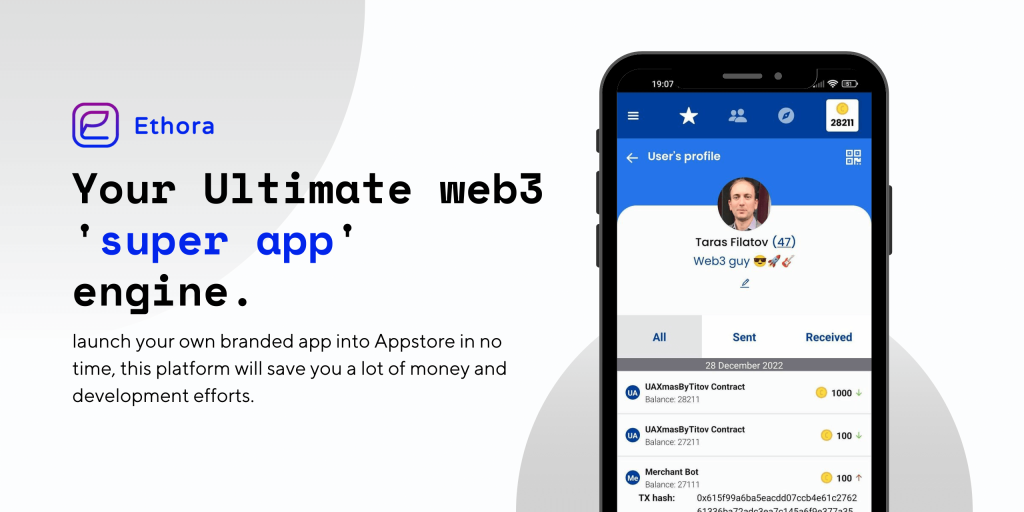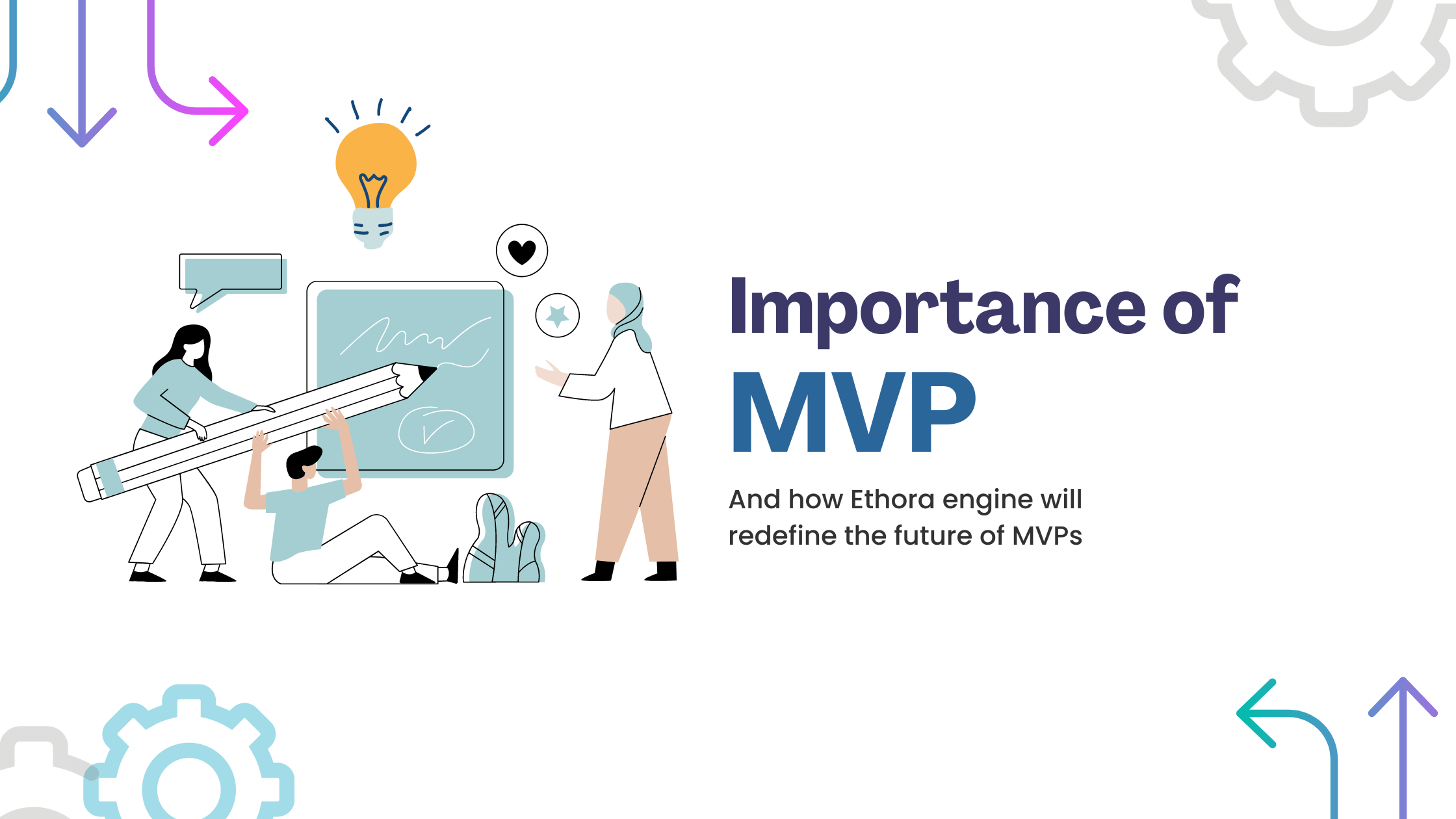The landscape of mobile app development is evolving continuously, given the side-by-side existence of both Web2 and Web3 apps. If you wish to stay competitive as an app developer, you must read this article to learn more about MVP, its future, and the Ethora boilerplate to build Web3 apps in the Web2 landscape. Let’s get started!
What Is an MVP in Mobile App Development?
An MVP or minimal viable product is a basic version of the production-ready mobile app. It has essential features to solve a core problem for users. It’s a cost-effective strategy to test the product’s viability.
You can gather user feedback for improvements using the MVP. Developers often learn about their user base through the minimal viable product. For future development projects, you can make informed decisions from past MVPs.
An MVP reduces the risk of failure. Not to mention, if you’re a budding app development business, you can leverage your MVP to invite investments.
Why You Must Develop an MVP?
Launching with an MVP isn’t just optional; it’s essential in the fast-paced world of mobile app development. Think of it as a learning launchpad, not a finished product.
It lets you achieve idea validation, risk minimization, adapt to the immediate changes in the mobile app market, iterate to create the perfect user interface, attract investors, and build a buzz around your mobile app in the intended community. It’s the easy and fast way to produce ready mobile apps for Web2 and Web3 landscapes.
Benefits of MVP in App Development
An MVP is a conceptualized version of the final mobile app. It’s based on a principle. This principle is about validating your app idea. It involves real users. It aims to minimize time and resources.
Developing an MVP has its own benefits. One benefit is testing your app’s feasibility. This is done in the realm of real users with minimal risk of project failures. You release a simple version of your app to get feedback from early users. You make changes based on their insights. This approach refines your app. It also reduces the chance of wasting resources. These resources might be spent on features that users don’t like.
Another benefit of an MVP is saving time and resources. You don’t spend months or years developing a full app. You focus on the main functions. This allows you to launch sooner. You can respond quickly to market demands and trends.
An MVP also helps with lean development. You can prioritize features. This is based on their importance and impact. You start small. You add features gradually. This is based on user feedback and analytics. Your app stays focused. It is user-centric.
How Does an MVP Shape the Future Developments of Mobile Apps?
Find below how today’s minimal viable product concept shall transform the future of Web2 and Web3 mobile app development trends:
Low Code No Code Development
Low code and no code allow for the democratization of mobile app development. This not only accelerates the creation process but also fosters creativity and innovation by enabling a broader range of contributors to participate in the process.
App development platforms offering low and no code are already rising and shall rule in the future of MVP developments. This concept shall enable individuals with varying levels of technical expertise to create functional mobile applications without going through programming courses.
Microservices Architecture
The MVPs you’ll be developing in the future will be based on microservices architecture. It lets you break down complex mobile apps into smaller, more manageable services. This modular approach facilitates scalability, flexibility, and maintainability, enabling developers to iterate and evolve their applications more rapidly in response to changing user needs.
Not to mention, if you want to stay updated with the market dynamics, the microservices architecture shall help.
Integrating AI and ML
You can develop more intelligent and responsive MVPs that deliver enhanced user experiences by utilizing the power of AI and ML. Such minimal viable products also drive greater engagement and retention for the focus groups or beta testers.
Furthermore, by integrating AI/ML with MVPs, you can develop mobile applications with advanced capabilities such as personalized recommendations, natural language processing, image recognition, and predictive analytics.
Blockchain, Web3, and IPFS
More and more apps are now becoming Web3 apps. However, the developers also keep the Web2 features to easily transform into the future of mobile apps. With the help of blockchain and IPFS, you can ensure Web2 and Web3 apps coexist in the same codebase.
Blockchain allows for stringent data privacy and content security. Every change made within the MVP during the initial development phase of the mobile app shall be stored in a decentralized ledger of the host blockchain.
To store the codes, content, and other creative assets of your MVP, you can use IPFS for greater accessibility, security, and authentication.
Use of AR and VR
Augmented reality (AR) and virtual reality (VR) technologies are reshaping the way we interact with mobile applications by creating immersive and interactive experiences.
From gaming and entertainment to education and training, the use of AR and VR in mobile app development opens up new opportunities for innovation and engagement across a wide range of industries and use cases.
Remote MVP Development
The shift towards remote MVP development allows distributed teams to collaborate and iterate on app ideas and prototypes more efficiently and cost-effectively than ever before.
By leveraging cloud-based collaboration tools, communication platforms, and development environments, remote teams can overcome geographical barriers and work together seamlessly to bring their vision to life.
Free Open Source Software MVP
FOSS encompasses software that is both free to use and allows users to view, modify, and distribute its source code, fostering collaboration, transparency, and innovation within the developer community.
By leveraging Free Open Source Software frameworks, libraries, and tools, mobile app developers can significantly reduce development costs, accelerate time-to-market, and mitigate vendor lock-in risks.
Furthermore, FOSS promotes interoperability and compatibility, enabling developers to seamlessly integrate third-party components and contribute to the ongoing evolution of shared codebases.
Why Is Ethora Boilerplate the Best for Web2 and Web3 Apps?

Now, if you’re at the juncture of choosing the best boilerplate codebase to build a Web3 app that also offers Web2 features, you must take a look at the Ethora boilerplate. It’s available on GitHub, so you can fork or clone it for free.
Ethora engine is your best bet for future-ready Web2 apps with Web3 functionalities because of the following reasons:
Open-Source and Customizable
Ethora operates as an open-source ‘super app’ engine, readily accessible on GitHub. Crafted with React Native for iOS & Android and React.js for the Web, its architecture offers extensive customization possibilities to cater to diverse needs.
Low-Code Engine
Originally conceived as a low-code engine, Ethora facilitates app launches without demanding extensive coding proficiency. Moreover, it permits seamless code and functionality modifications at any stage.
Comprehensive Features
Ethora encompasses an array of both web2 and web3 functionalities. Users can engage in NFT creation, coin transfers, and chat & voice communication. Additionally, it incorporates features such as social sign-on, push notifications, gamification, digital asset management, and chatbots.
Focus on Growth
Leveraging Ethora allows businesses to concentrate on core operations and community expansion without dedicating extensive time and resources to foundational tech development.
Web3 Infrastructure
Ethora boasts a robust web3 social infrastructure, offering users instant messaging, push notifications, and decentralized identity capabilities effortlessly and seamlessly.
Quick Setup
With Ethora’s user-friendly app builder interface, setting up a personalized app with white labeling takes a mere 5 minutes, streamlining the development process.
Conclusion
Now you know the future trends set to dominate the minimal viable product (MVP) development landscape. Align your MVP projects according to these trends to see better results in your mobile apps.
Also, if you’re willing to make your app future-ready for Web3, customize the Ethora boilerplate according to your brand’s requirements and get started with a free MVP right away.


